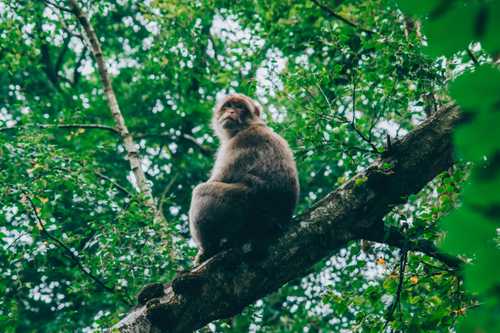
It’s long been thought that chimpanzees use plants medicinally – now, a team from the University of Oxford have come close to verifying these claims. By following wild chimps in Uganda, Dr Elodie Freymann and her colleagues were able to observe instances of unwell individuals seeking out and ingesting plants which are otherwise rarely eaten.
How was this found out?
As you might imagine, “it is difficult to establish when wild animals are ill and what effect their diet has” (in part because of these occurrences’ infrequency), but the team were able to establish some certainty by analyzing urine and feces, or identifying individuals who were clearly wounded. Once tested, all of the plants seen to be eaten by ill or injured chimps exhibited anti-inflammatory properties, while 88% “were active against bacteria that are pathogenic in humans, including antibiotic-resistant strains like MRSA”.
This evidence paints a compelling picture of our closest living relative practicing self-medication. Elsewhere, in Tanzania, it’s also been noted that chimps “may treat themselves when they feel sick with the same plants that local people use for the same sort of illnesses”, while bristly leaves, swallowed whole, or the pith of particular plants, are ingested in various locations to mechanically flush out “parasites from the digestive tract, resulting in rapid health improvement”.
What other animals use medicine?
Chimpanzees are by no means outliers when it comes to the more-than-human world using medicinal materials. This zoopharmacognostic behavior (zoo – animal; pharma – drug; gnosy – knowing) is also undertaken by a range of other species. Though examples aren’t limited to ingestion (medicines can also be applied topically), according to guidelines laid out by Michael Huffman (the biologist who first suggest that the chimps ingesting those bristly leaves were in fact self-medicating), for ingested material to count as medication, it must fit the following criteria:
- Not be part of the animal’s regular diet
- Provide little to no nutritional value
- Be consumed during times of year when infections caused by parasites are at their most prevalent (eg, during the rainy season)
- Not be consumed by the other animals in the group.
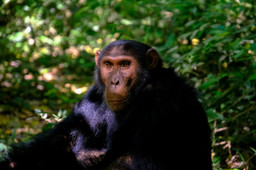
The substances in question may be used as prophylaxis (preventatively) or therapeutically (after infection). Examples of other animal self-medicators include:
Another great ape, the orangutan:
- In Indonesian Borneo, wild Bornean orangutans have been seen to chew Dracaena cantleyi to produce a lather which is then applied to the skin: “the first report of self-medication in an Asian ape, and […] the [first observation of] external application of an anti-inflammatory agent in animals”. This behavior has primarily been observed being carried out by adult females, so it has been hypothesized that the plant may be being used “to soothe sore muscles and joints from the extra weight of carrying their infants while climbing through the forest canopy”. As in Tanzania, this plant is also used medicinally by local Indigenous people.
- Meanwhile, in May of this year, a male Sumatran orangutan used a medicinal plant to treat a wound on his face, apparently in order to accelerate healing: “the first case […] of a non-human animal using a plant with proven therapeutic properties on an open wound”. This plant, Fibraurea tinctoria, which is used by locals as a treatment for conditions including malaria and jaundice, has “potent” antibacterial, anti-inflammatory, anti-fungal, and antioxidant properties, “and is known to alleviate pain, fever, bleeding and inflammation”.
Dogs and cats:
- Use indigestible plant material such as grass as a way to induce vomiting and improve stomach upsets.
Other mammals:
- White-nosed coatis in Panama rub themselves with menthol-like resin scraped from the bark of the Trattinnickia aspera tree, perhaps as a way to deter biting insects or ecto- (external) parasites like fleas, ticks, and lice
- During cold, wet times of year, crested porcupines in Central Italy are susceptible to particular parasites, which they self-medicate against by seeking out a large range of plants known to have antiparasitic properties
- Wild boar in India dig up and consume the roots of the pigweed plant for similar reasons.
Macaws, parrots, and parakeets:
- Eat clay at licks in Southeast Peru. Doing so was previously believed to help them neutralize toxins absorbed through their daily diet, but more recent thinking suggests that they may be ingesting salt-rich clay to supplement sodium deficiencies, or to source vitamin B12.
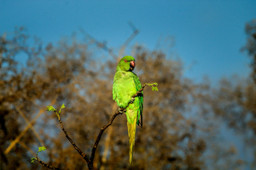
Invertebrates:
- Wooly bear caterpillars ingest plant toxins to gain resistance to specific species of flies which endo- (internally) parasitize them
- If infected with the fungus Beauveria bassiana, ants will deliberately eat substances containing reactive oxygen species (ROS) – highly reactive and unstable molecules which they otherwise avoid.
These cases demonstrate relatively straightforward use of natural material as a form of treatment, primarily against parasites. However, other cases exhibit more complexity. These include situations related to the reproductive cycle, such as substances which act as aphrodisiacs, forms of birth control, or which assist in childbirth:
- In Brazil, female wooly spider monkeys “eat [specific] leaves to increase their levels of estrogen and progesterone, effectively using them as contraception or, when they’re ready, increasing fertility”, while red colobus monkeys eat the toxic – but hormone-rich – leaves of the Millettia dura tree to “increase acts of aggression and sex”
- In Madagascar, pregnant lemurs consume the leaves and bark of tamarind and fig trees to “aid in milk production, kill parasites, and increase the chances of a successful birth”
- When pregnant or breast-feeding, sifakas (a particular type of lemur) “increase their consumption of tannin-rich plants” to increase weight gain and the secretion of milk. (In veterinary medicine, tannins are also used as anticoagulants and as anti-abortive agents)
- Outside of primates, pregnant elephants eat the leaves of a particular tree from the Boraginaceae family as a way to induce birth (by brewing a tea from these leaves, Kenyan women use them for the same purpose), while, prior to their mating season, great bustards (large, ground-nesting birds) consume blister beetles. “In the proper dose, the[se] have been found to reduce gut bacteria that cause STDs and other diseases”; in the improper dose, they can be lethally toxic.
Other forms of medication relate not to the individual in question, but to subsequent generations. For example, when parasitoid wasps are detected, fruit flies choose to lay their eggs in plants which contain high levels of ethanol – a way to confer preemptive protection on their offspring. In a similar fashion, sparrows have come to adopt cigarette butts as one of the materials used to construct their nests, where “the nicotine residue impedes parasitic mites” which would otherwise affect their chicks. This example also shows that the substances used for self-medication need not be naturally occuring.
However, all of these behaviors beg the answer to a glaring question:
How do animals know how to self-medicate?
That animals use the attributes of the world around them in this way – a way we’re perhaps inclined to see as unexpectedly sophisticated – challenges our preconceptions about their intelligence. But identifying the nature of this intelligence is easier said than done.
To some degree, illness may cause “instinctual craving[s]” – for example, for plants with a bitter taste, a trait often associated with antibiotic or antiparasitic properties. And many species (even ones “with brains the size of pinheads”) “seem to have evolved an innate ability to detect the therapeutic constituents in plants”.
Otherwise, animals’ knowledge of the medicinal properties of particular substances are likely to have come from “the same trial and observation methods humans have used to find effective medicines”, with this information then being passed down ancestrally. (The example of birds using cigarette butts to reduce mite infections is an instructive modern example, as it shows that the birds must have noted the butts’ coincidental property, remembered it, continued to use them for this purpose, and passed the behavior onto their young.)
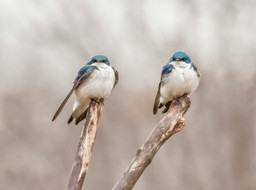
However, while intelligent animals use active learning, in the form of observation of one another’s behavior, and “certainly pass their knowledge on to their progeny” – in the case of apes, via vocal and gestural communication – this doesn’t mean that all learning follows this pattern. Innate learning can lead to behavior which confers similar benefits, but doesn’t imply that “real thought goes into it”.
For example, parasites can have extremely deleterious effects on monarch butterflies by boring holes in the abdomen, causing the loss of bodily fluids. However, these effects may be avoided if the butterfly lays its eggs on the milkweed plant, due to its anti-parasite properties. If a specific butterfly has a “genetic proclivity to healing plants”, there’s a high chance that its offspring will inherit this proclivity, giving subsequent generations a higher survival rate. In this case, then, “the behavior is in the genes”.
However, whether or not an animal is aware of the positive effects of its behaviors, they can still be passed on via the process of natural selection: by adopting a beneficial behavior, the animal increases its ability to survive, meaning that it will have more opportunity to pass the behavior down to its offspring, and so on.
Who used these medicines first, animals or humans?
There are many examples of Indigenous and traditional human medicine overlapping with the plants with which animals self-medicate. This isn’t a coincidence; it’s probable that much traditional medicine “came from medicine men watching animals self-medicate”.
Given humans’ atypical, adaptative (not to say exploitative) intelligence, it’s likely that this adoption of medicine used by animals has been occuring during the whole of the few hundred thousand years that we have existed. In fact, it’s possible “that our earliest ancestors gained the roots of medical knowledge by observing apes or other animals”.
Looking back as far as we’re able to with any clarity only takes us back into classical antiquity – just a few thousand years ago; a negligible fraction of our species’ existence – but doing so does reveal many such observations of animal behavior. Some may be inaccurate, or embellished, but they demonstrate the heightened significance that the natural world would have had, at a point when many of the natural and physical laws we take for granted had yet to be established.
Early naturalists like Aristotle, Pliny the Elder, and Aelian describe many “animals us[ing] plants to treat illness, repel parasites, neutralize poisons and heal wounds”. Examples include:
- Aristotle noted bears’ tendency to eat wild garlic after hibernation – a plant it’s now understood is able to replenish their need for nutrients such as vitamin C, magnesium, and iron
- It was also claimed that if elephants accidentally ingested chameleons, they would eat olive leaves – “a natural antibiotic to combat salmonella harbored by lizards” – while Pliny stated that ravens deliberately consume chameleons, but self-medicate with bay leaves. The antibacterial properties of bay leaves are effective in cases of digestive problems, being used for this reason by a range of other birds
- Pliny also wrote about deer eating both wild artichokes (to relieve the symptoms of eating toxic plants) and crabs washed up on the beach (as a cure for spider bites; we now know that the chitosan in crab shells “boosts the immune system”).
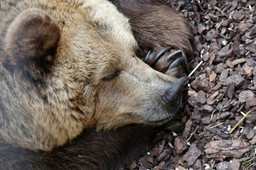
More modern anecdotal examples of the human adoption of plants used medicinally by animals include:
- “A local healer” treating an epidemic with a preparation derived from a root seen being chewed by an unwell porcupine
- Before the development of modern insect repellents, citronella and citrus was traditionally used in China, India, and Sri Lanka as protection against insects – but it was capuchin monkeys which pioneered this form of insect repellent
- Bonobos ball the leaves of Manniophyton fulvum on the tongue prior to swallowing – an operation complicated by the plant’s ability to cause itchiness and sores if it makes contact with the skin. It may be that the ball of foliage scours parasites from the intestinal passage – while, “across Africa, humans use the plant as suppositories, enemas, and as a treatment for hemorrhoids”
- In the US, brown bears use oshá root “to stimulate their sluggish digestion” after hibernation, as well as rubbing it over their fur; having observed this behavior, Indigenous people including the Navajo use this ‘bear medicine’ for a range of purposes.
The way that animals’ and humans’ use of the same medicinal plants coincides is a powerful demonstration of how much more closely we lived, historically, with animals and the natural world. Yet, now, due to the predominant urbanization of our species, these overlaps seem more like improbable coincidences than evidence of our closeness or our status as part of that same world.
Does animal self-medication have benefits for us?
As we increasingly isolate ourselves from the natural world (not least by destroying it), and stand on the brink of a future apparently to be dominated by AI and quantum computing, it may seem twee to imagine that we have anything to learn directly from our more-than-human cousins. However, that attitude would not only be arrogant, but foolish.
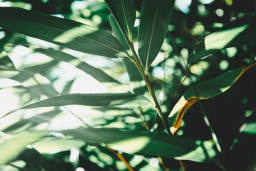
“A large number of medicinal plants used in modern drugs were first discovered by Indigenous peoples and past cultures who observed animals employing plants and emulated them.” This model continues to be valuable and relevant. To take the recent example of the Sumatran orangutan treating his wound “with a biologically active plant”, it’s hoped that this discovery will “provide new insights into the origins of human wound care”. Similarly, Bornean orangutans’ topical application of an anti-inflammatory substance has been said to underline “the importance of tropical forests for medicinal plants”, while “identifying the active compounds in the plant extracts [used by sick chimpanzees] might lead to promising candidates for human medicines”. Even the milkweed plant used as a site for egg-laying by monarch butterflies has been shown to derive its anti-parasite properties from chemicals called cardenolides; these “are already used to relieve pain and as an aid to treating asthma”, demonstrating the continuing relevance of animals’ medicinal use of plants to modern human pharmaceuticals.
“Plants remain the most promising source of future pharmaceuticals.” Animals have reaped their benefits “for millions of years”, including the use of flora which is effective against “terrible human afflictions” such as schistosomiasis, plasmodium, and leishmania. Therefore, in taking self-medication by animals seriously, we may enable the production of new drugs with unforeseen benefits for humanity.
Featured photo by Lewis Roberts on Unsplash
Earth.fm is a completely free streaming service of 1000+ nature sounds from around the world, offering natural soundscapes and guided meditations for people who wish to listen to nature, relax, and become more connected. Launched in 2022, Earth.fm is a non-profit and a 1% for the Planet Environmental Partner.
Check out our recordings of nature ambience from sound recordists and artists spanning the globe, our thematic playlists of immersive soundscapes and our Wind Is the Original Radio podcast.
You can join the Earth.fm family by signing up for our newsletter of weekly inspiration for your precious ears, or become a member to enjoy the extra Earth.fm features and goodies and support us on our mission.
Subscription fees contribute to growing our library of authentic nature sounds, research into topics like noise pollution and the connection between nature and mental wellbeing, as well as funding grants that support emerging nature sound recordists from underprivileged communities.

